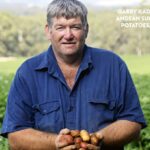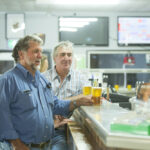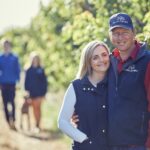Garry Kadwell, a fourth-generation potato farmer from Crookwell in the NSW Southern Tablelands, has been…
Grains of hope after a bumper harvest
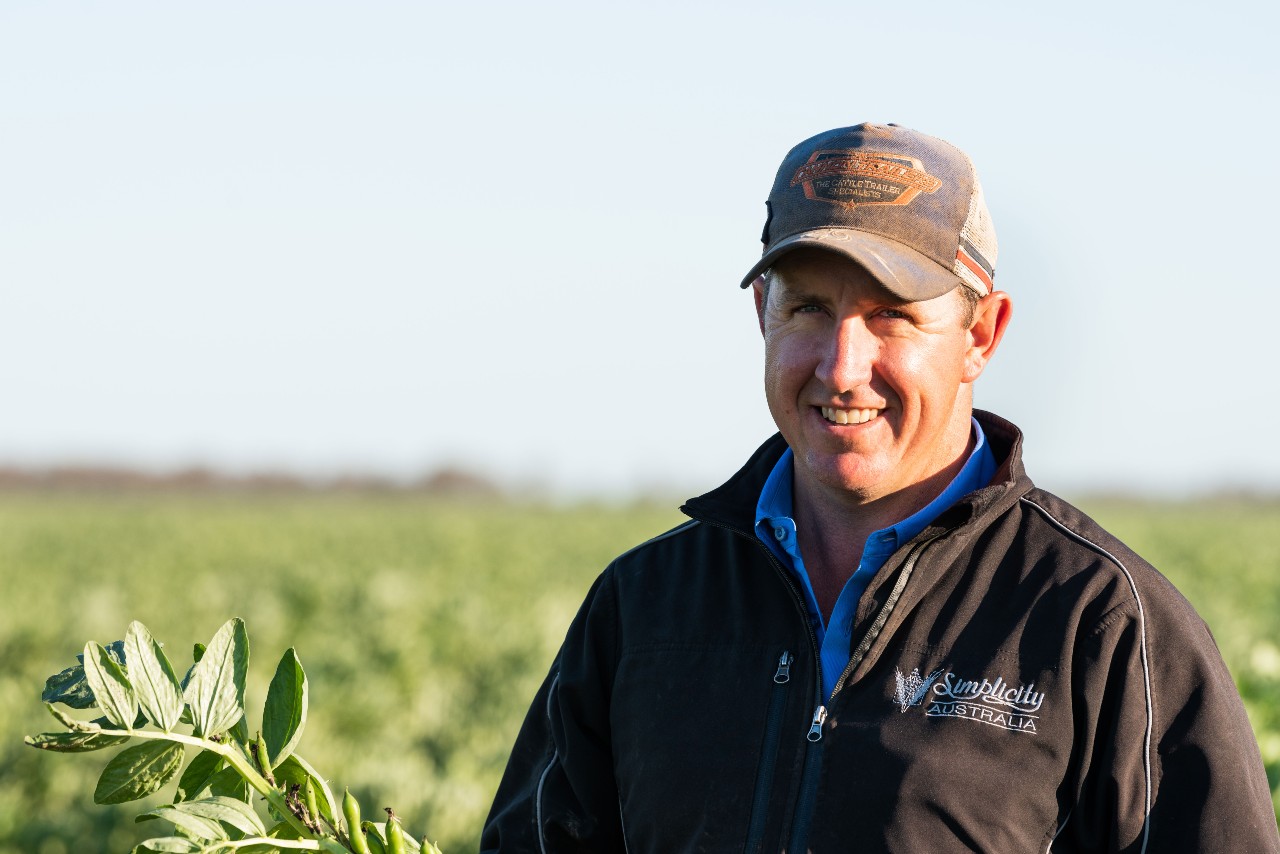
The record-breaking numbers of the grains harvest � the latest ABARES forecast is 17.6 million tonnes � led to headaches for some, as grain accumulators struggled to cater for the influx and truck drivers faced longer than usual wait times to deliver their loads to receival sites.
But as Trangie farmer Kevin Flinn told ABC Rural in November: �This season is something I don�t think we�ve ever seen around here before. You might have to wait in line to get your wheat delivered, but how good�s that?�
It didn�t take long for the renewed confidence of farmers, buoyed by the heady combination of good yields and good prices, to have tangible benefits for regional and rural economies.
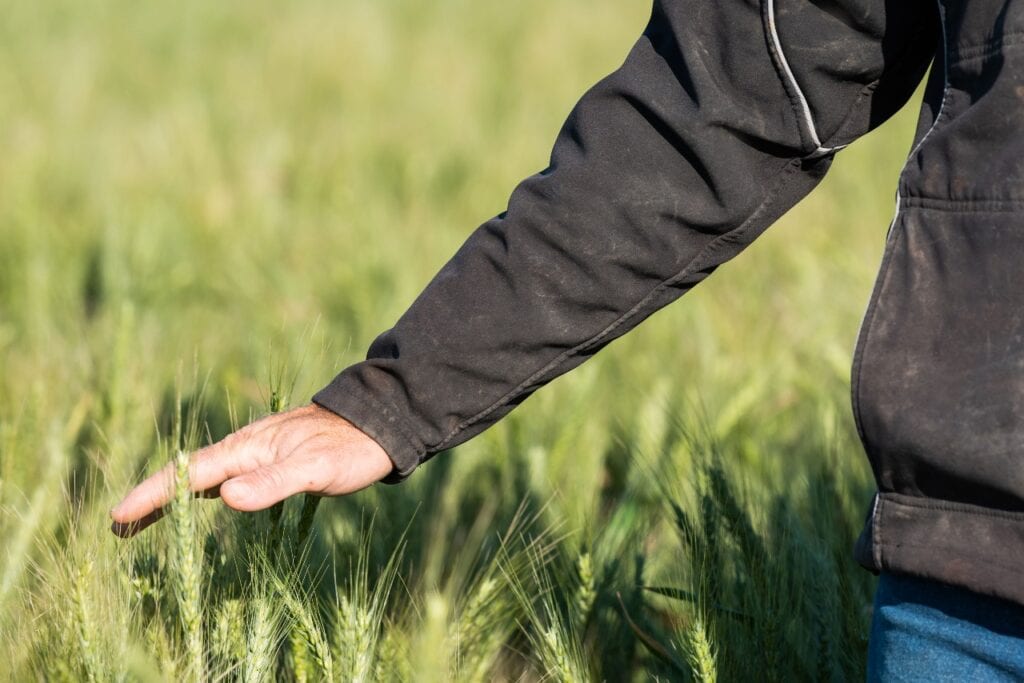
NSW Farmers grains committee chair Matthew Madden says the money will quickly flow into towns as farmers pay down overdrafts and accounts with suppliers, and schedule long overdue machinery repairs, equipment upgrades and other improvements.
�It�s very hard to buy a new car at the moment, so that�s a good sign,� he says. �People have been managing their businesses carefully for the last few pretty tough years. This will be a good shot in the arm, and they�ll be able to make sure that everybody�s bills will be paid. It brings back a lot of confidence to the industry and to the farmers and their towns.�
Over the line in Moree
Matthew, who grows wheat, barley, chickpeas and sorghum 25km east of Moree, says harvest in the region was mostly complete in mid-November after several rain delays. Apart from some staining, grain quality remained high.
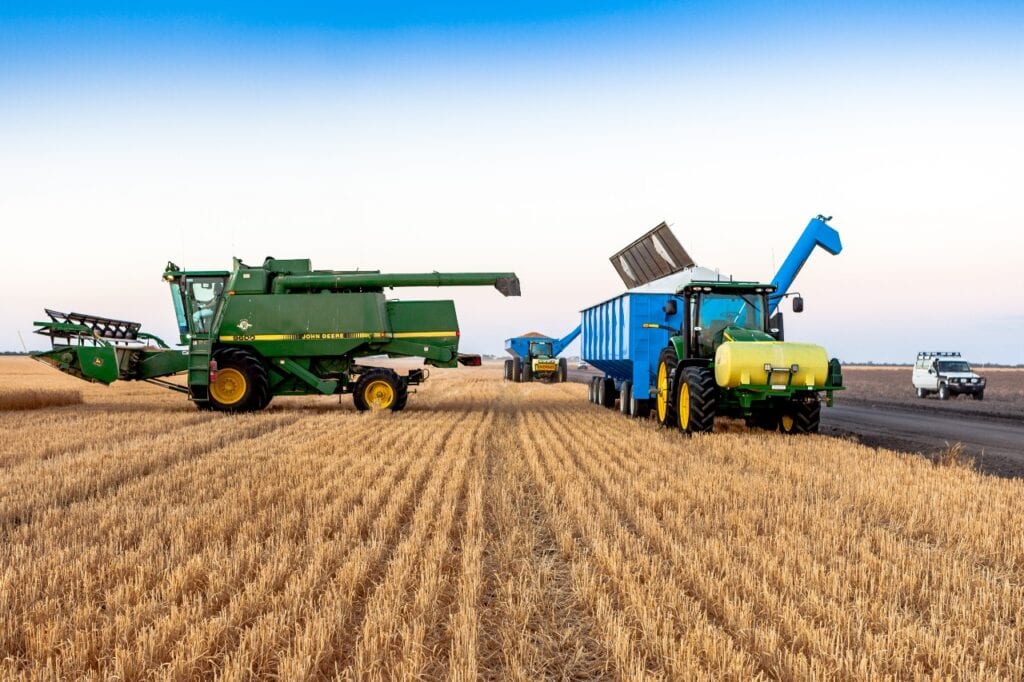
The potential for labour shortages caused by COVID-19 related international and interstate border closures was recognised and dealt with early in the season.
�In June, July, August, the message went out and people came out of the woodwork to help,� Matthew says. �Older guys, recently retired farmers and airline pilots came into the scene. I had a retired accountant on our chaser bin. It was a trying time for people who weren�t fully trained, but they were able to get these guys over the line.�
A comeback in Gunnedah
NSW Farmers vice president Xavier Martin, who farms south-west of Gunnedah, says a significant number of farmers in the Liverpool Plains had harvested the best crop in their lifetime � a far cry from the situation they faced in 2019.
�We had dust storms, drought and wind erosion,� he says. �I�d never seen black soil blow like it did this time last year � it was severe. And anything that was flammable was on fire around the valleys, so it was all… like Armageddon.�
Life-changing rain in February and March set most farm businesses in the region up for an astonishing comeback, even with the added challenges of mice, disease and frost damage.
�We shouldn�t have been surprised that the biblical plagues were coming after the drought and the fires,� Xavier says. �We had to bait the whole crop aerially for mice, and none of that was in the budget. But the result and yields are very good quality and even better quantity. So, on those two counts, it means we�ve made a startling recovery in our farm businesses. And that�s reasonably universal across the Liverpool plains.�
Xavier, who made the unusual decision to grow only canola because of issues with cereal diseases, says he was unable to relax until he could see the end of the last paddock in front of the headers.
�A lot of the early harvest is all about cost recovery and it�s only that last bit you get off that�s the profit end of the deal,� he says. �Getting it in out of the weather is such a relief.�
Once his own crops were safely in the silo, Xavier began helping neighbours, as many farmers have done.
�We�ve all been through so much stress the last few years that we�re all looking out for each other and saying, �How can I help you?� with a chaser bin or a header or, �Do you need our crew?�,� he says. �There�s a lot of that going on.�
And while most farmers across the state are having their best ever season, Xavier says that�s not the case for everyone.
�There�s a few people that have really, for one reason or another � sometimes it�s a hailstorm, sometimes it�s frost, sometimes they were a bit late responding to a significant rust infestation in their wheat � and they�re just not going to get average yields,� he says. �That hurts, so we just can�t sprinkle pixie dust over the whole lot and say it�s all wonderful.�
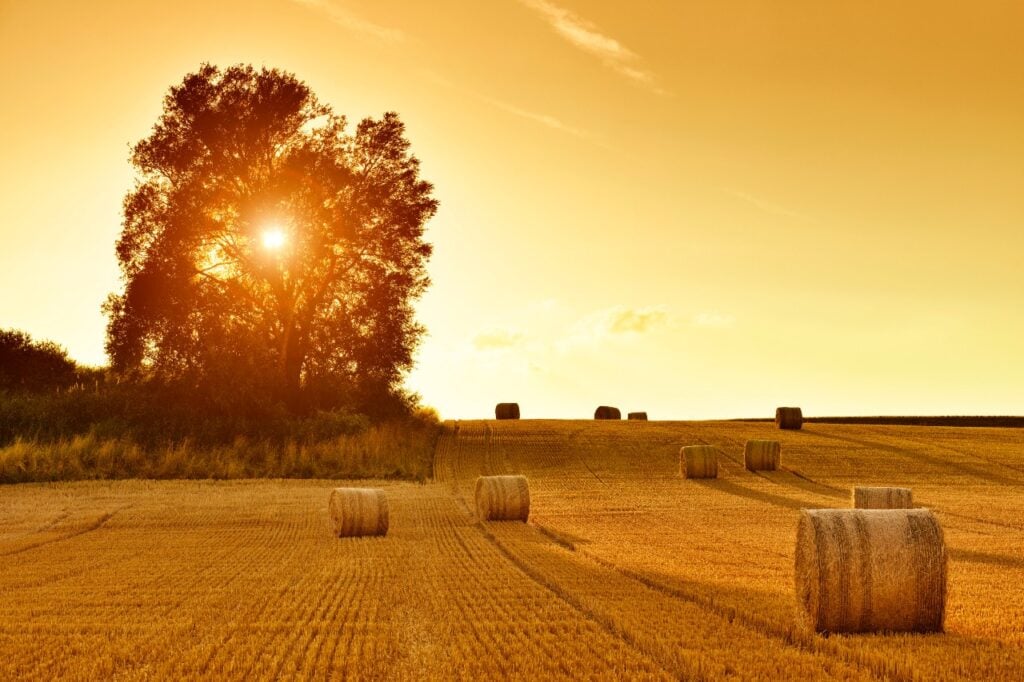
Less pressure at Wyalong
NSW Farmers grains committee deputy chair Brent Morton, who has a spray contracting business and farms near Lake Cowal, 35km north east of West Wyalong, says 2020 was a �do-or-die year for a lot of people�.
�It�s been shocking here for a few years,� he says. �If it didn�t come off we were in a bit of trouble. But we got that early rain, the season started to look good, the long-term forecasts looked good. Everything was sort of stacking up to show signs of a good year and people just went hard at it.�
After three years of zero demand for contract spreading of nitrogen, Brent says the phone rang nonstop as farmers did their best to keep nutrients up to the rapidly growing crops. Frequent rain events meant business also was brisk for aerial spreading and spraying of fertilisers and fungicides across the large swathes of country that was too wet for machinery.
Harvest in the region started in mid-November with sensational yields, including 5-8t/ha of barley and 2t/ha or more of canola, which Brent says is double the district average.
Breaking records in Brockleby and Howlong
Justin Everitt, who farms between Brockleby and Howlong near the NSW-Victorian border, says they were fortunate to harvest crops in 2019, but 2020’s crops were 60 per cent better.
�We�re in what we consider normally a very safe area,� he says. �But the past two or three years was very dry, and we cut a lot of crops for hay and silage. It was very tough trying to maintain livestock, although meat prices have been rewarding for those who kept going through the drought.�
Justin says it�s been a phenomenal year, even though the season dried off towards the end.
�The start that we had was something I�ve never experienced in my 20 years of farming,� he says. �I know 20 years is not a long time when you�re third or fourth generation, but it�s pretty impressive for me to see a year like this.�
By the end of November 2020, GrainCorp�s 87 up-country NSW sites had accepted more than 6.29 million tonnes of grain and set several new daily receival records.
High hopes in Northern NSW
General manager of operations Nigel Lotz says yields 20-30 per cent higher than expected, especially in northern NSW, and fears of crop downgrades and damage from La Nina-related rain and storm events during harvest drove the early rush.
�The season is early and it�s coming in very, very fast,� he says. �It blew us away. It�s been very challenging to receive it so quickly and I think everyone is worn out.�
Nigel says GrainCorp was well into a program of upgrading its facilities to improve efficiency and reduce costs. Extra contingency measures include sending grain by train to the company�s two port terminals, reopening some older sites and creating temporary bunkers.
Most of the crop was expected to be in by Christmas, with a �second wave� of grain deliveries to come in early 2021 from farmers using short-term on-farm storage, such as silo bags.
��Relief in Walgett
After cutting one decent crop in the previous seven years, it comes as no surprise to learn that Walgett farmer Sam Evans didn�t relax until November 17 � the day he wrapped up the 2020 harvest.
Drought took hold in 2013, forcing Sam and his father Mark to feed their sheep for almost two years. A bumper 2016 cropping season brought some respite, but the drought returned with renewed intensity and handfeeding of livestock continued for another 27 months.
A sixth-generation farmer, Sam says average annual rainfall at the family farm south of Walgett is about 450mm. The tally for 2019 was �just over five inches�, or about 127mm for the year.
�That�s the lowest on record, or as far as our records go back, anyway,� he says. �We pretty much started 2020 from scratch. January was still dust storm after dust storm. And we were looking down the barrel of missing four in a row, which wouldn�t have ended so well for many people in the area and we would have definitely been one of them.�
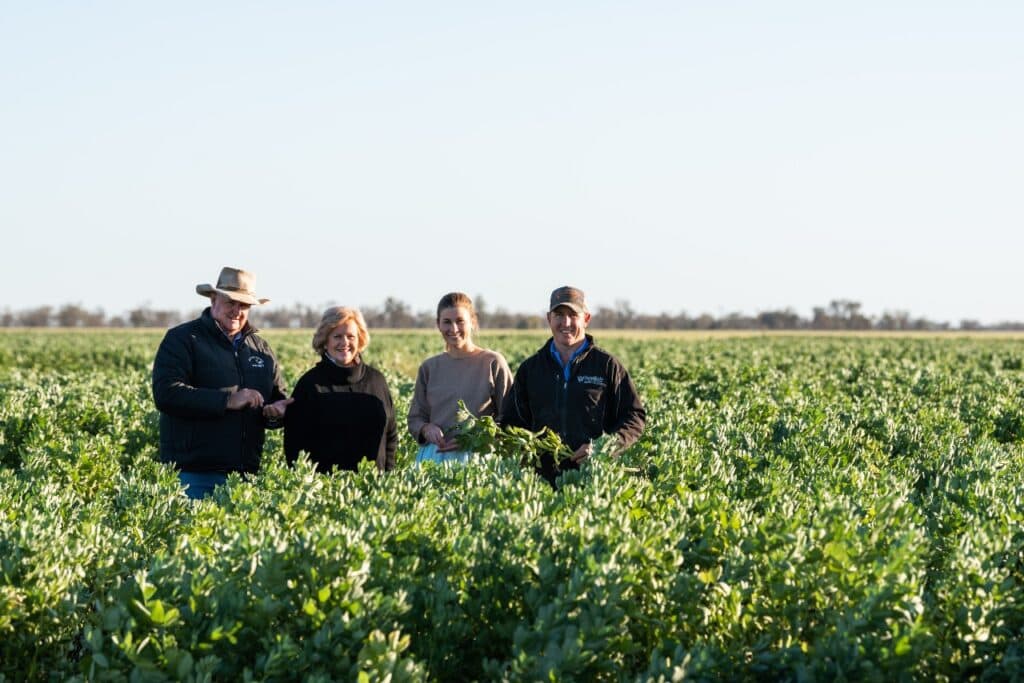
Rain began falling in late January and continued into February, allowing Sam to start with a clean slate, a renewed sense of optimism and begin sowing almost 10,000 hectares of wheat, barley, chickpea and faba bean crops.
�Being able to put the crop in, that was probably one of the biggest things, but it�s still a long way between sowing and harvest,� he says. �We always knew we were going to get something when we were planting. That was probably the biggest time we were hopeful, I suppose. And then any rain in the growing period was just a bonus.�
By the time The Farmer photographer Rachael Lenehan arrived at the farm in spring it was looking a treat, with wall-to-wall fields of green, compared to the bare paddocks and endless dust storms of previous years.
Harvest began on October 15 and yields were solid. The wheat averaged almost 3 tonnes per hectare (t/ha), barley about 3t/ha, faba beans 1.6t/ha and chickpeas 1.3t/ha.
Sam delivered contracted grain and put the rest into on-farm storage � silos, bunkers and sheds � ready for marketing in the new year �after the harvest games are over�.
�When we finished, it was a bit like I wanted to pinch myself,� he says. �But it�s a relief more than anything just to be able to get the ball rolling again. Hopefully � surely after what we�ve been through � even if we only get a few years in a row of average ones that are not so dusty on the ground. They don�t have to be big years every year, just things keep ticking over. You try and diversify as much as you can, but if you go back longer than the last 10 years� since my father�s been here, we�d only missed the occasional crop, never three in a row, let alone six out of seven.�
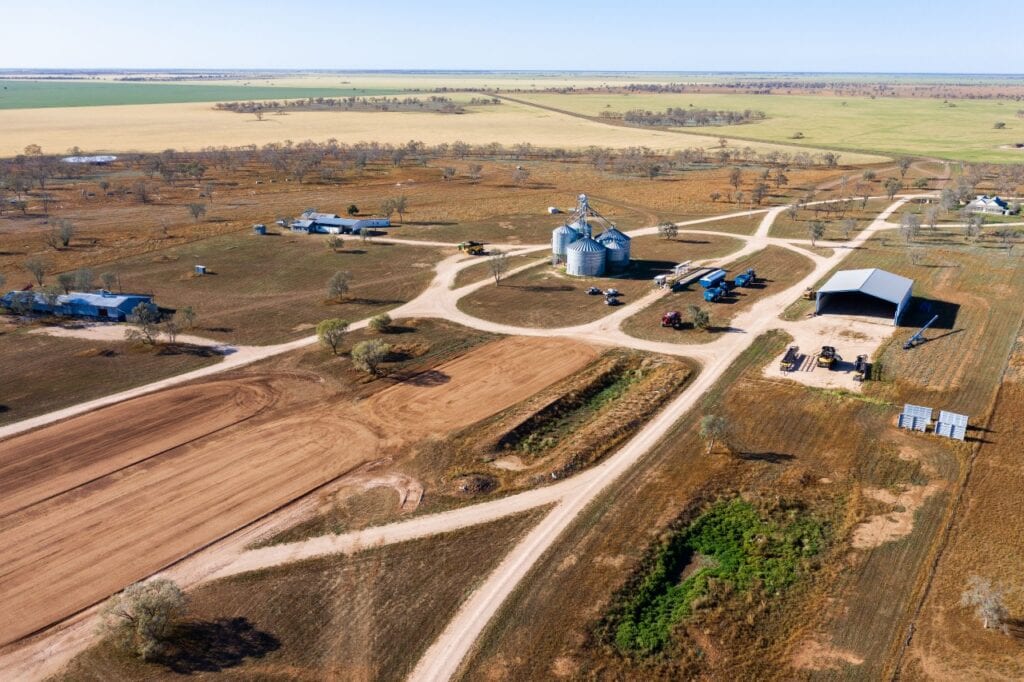
One of the things that kept the farm business afloat during the tough times was continued demand, and good prices, for beef and lamb. As well as Dohne sheep, they produce Angus cattle for the trade.
�Meat prices have been pretty kind,� Sam says. �We set up our own sheep feedlot just to finish our own lambs off. We weren�t buying any in. But if it did happen again, we�d definitely look at that possibility, depending on grain prices and everything at the time.�
The next step is to sell the grain, pay down the bank overdraft and get stuck into maintenance and improvements postponed during years of belt-tightening, before preparing to go around again in autumn.
If you enjoyed this feature, you might enjoy our story on AI in farming.


